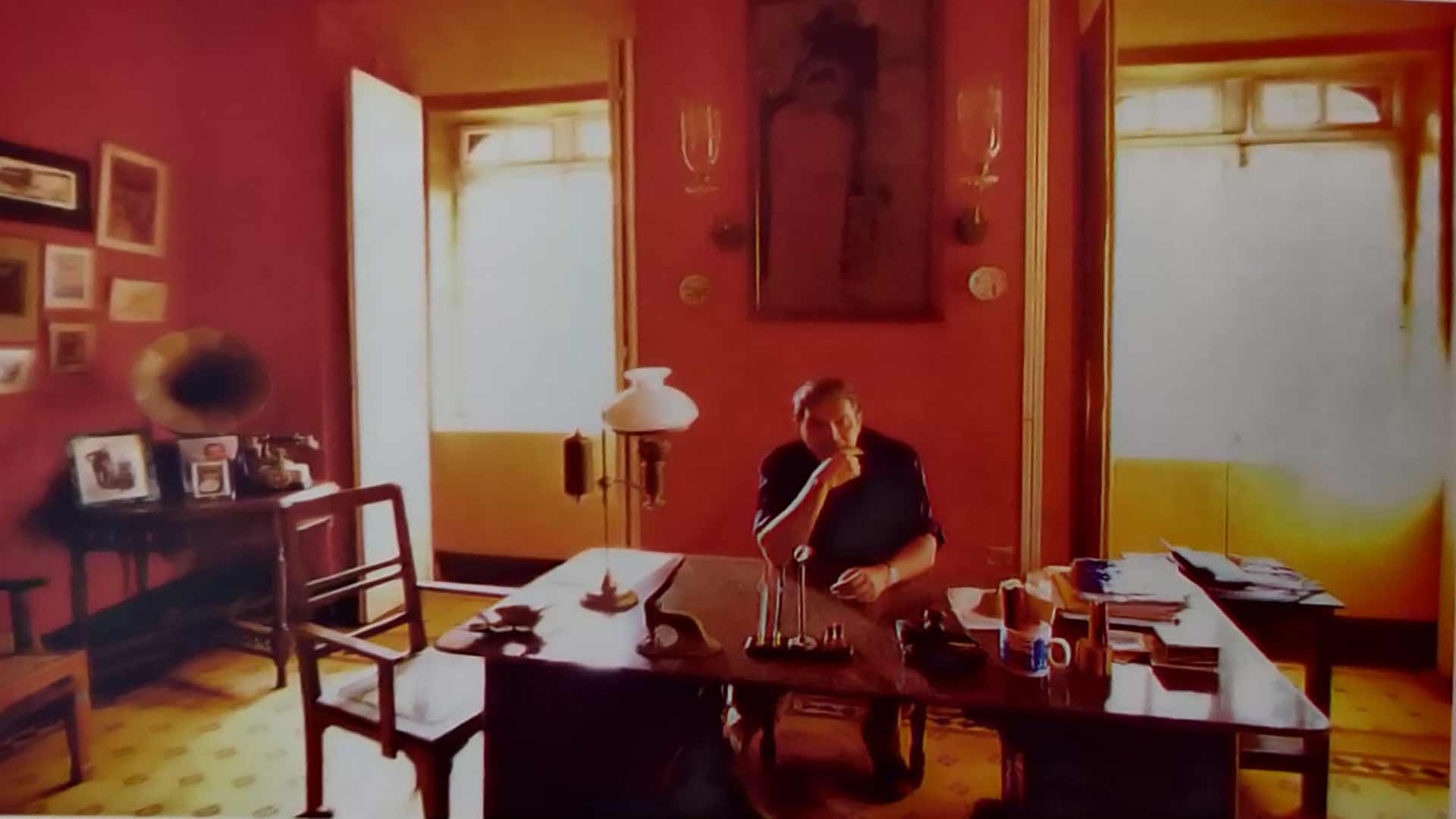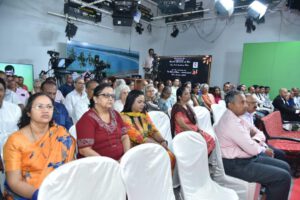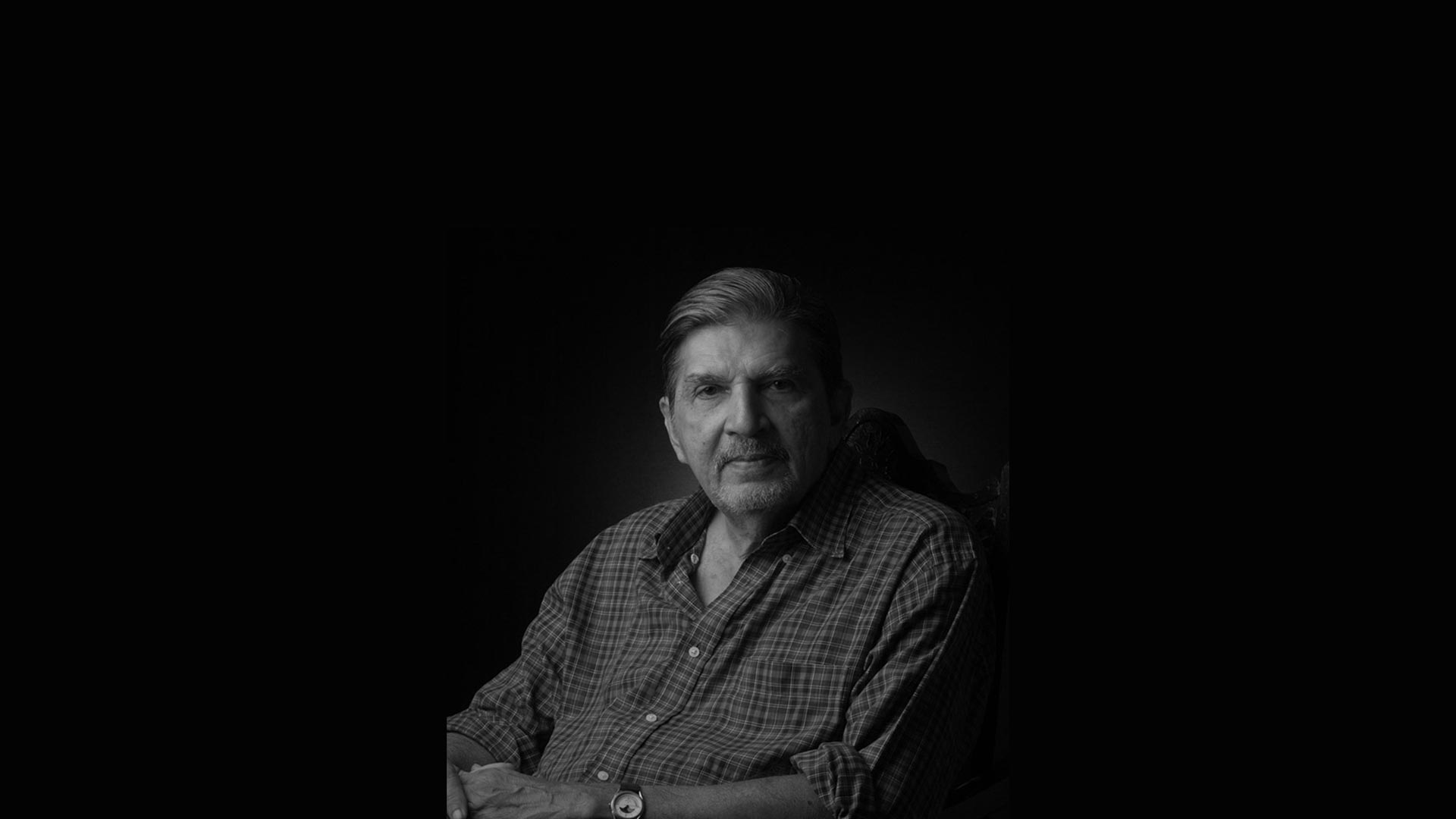Mario is Forever
When contacted by Dolcy D'Cruz of Goa's leading English-language daily Herald, for comments on the public screening of the documentary "The World of Mario... Seriously Funny!", https://www.youtube.com/watch?v=0Fj-KEN2kQI , researched and scripted by me for Doordarshan Goa, here is what I said, in reply to the journalist's questions:
On challenges faced
Mario had the world for his canvas, so the main challenge was to be able to truly cover his creative life in a short documentary.
Identifying the right talking heads and liaising with them was another challenge. His sister Fatima gave us valuable inputs. And we also got on board film-maker Shyam Benegal, Indian adman Gerson da Cunha, architect Gerard da Cunha who owns the Mario Gallery, and many others.
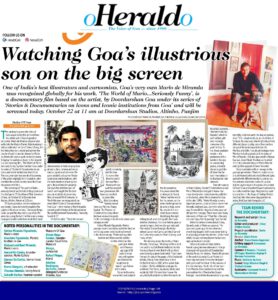
https://epaper.heraldgoa.in/oHeraldo?eid=1&edate=22/10/2024&pgid=52727&device=desktop&view=2
On his relevance
Mario is a curious case of a self-trained artist who had different styles, worked with different mediums, and across the print and electronic media.
It is a civic duty to pay homage to the greats of our land. Mario loved Goa and worked towards preserving our culture and heritage. Many tourists used to come here in the hope of finding ‘Mario’s Goa’ but often they were disappointed on seeing that Goa had changed a lot.
On a personal note
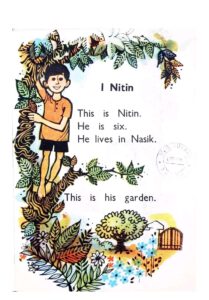
Working on Mario took me back to my Bal Bharati textbook. As kids, few must have known that the illustrations were done by a great Goan artist. 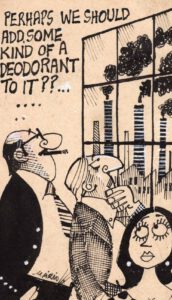 Then, I saw him and his dog in the pages of the Illustrated Weekly. Finally, I met Mario face to face for the first time in 1987, at the Gulbenkian in Lisbon. On his exhibition catalogue he scribbled, ‘For Oscar, Saudades, Mario’, and suddenly I felt I’d known him forever.
Then, I saw him and his dog in the pages of the Illustrated Weekly. Finally, I met Mario face to face for the first time in 1987, at the Gulbenkian in Lisbon. On his exhibition catalogue he scribbled, ‘For Oscar, Saudades, Mario’, and suddenly I felt I’d known him forever.
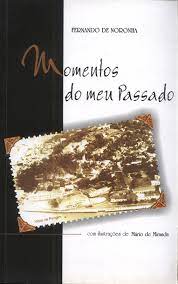
Also, he very kindly illustrated my dad Fernando de Noronha’s memoirs, Momentos do meu Passado, which he said had brought back nostalgic memories of his youth in Goa.
To me, those saudades remain – of a gentleman with a twinkle in his eye, an unassuming genius, a lovable character, just like all those that he has immortalized in his illustrations and cartoons.
-o-o-o-o-
Here are a few pictures of the event, which comprised the first public screening of the "Stories and Documentaries" series at DD Goa auditorium, inauguration of the digital screen and felicitation of the documentary team, and superannuation farewell of a DD Goa veteran:
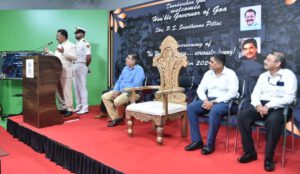
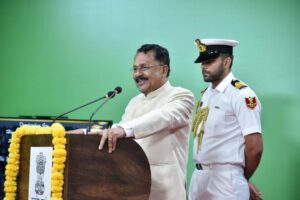 Governor of Goa addressing the audience
Governor of Goa addressing the audience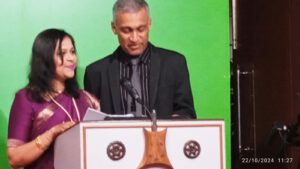
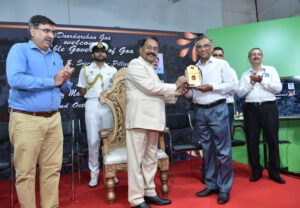
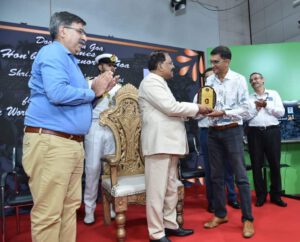
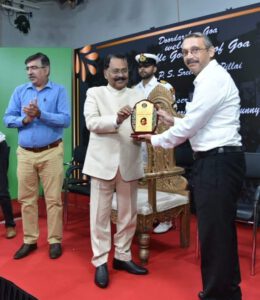
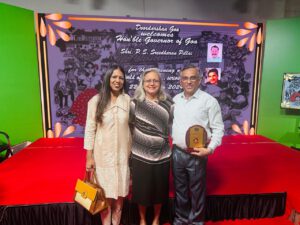
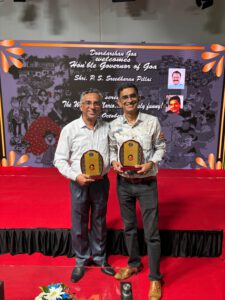
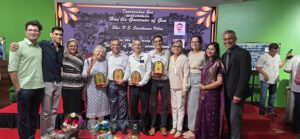
Pics, courtesy: Bambino Dias, Thomas Rodrigues Lorraine de Noronha, Miguel Furtado and Emmanuel de Noronha
Story of Mário, the Miranda (Part 5/6)
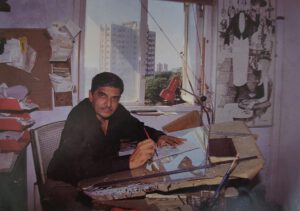
Reinventing himself
By his fiftieth year, Mário had developed an abiding interest in illustrating books. After Ruskin Bond’s The Room on the Roof, Uma Anand’s books for children,[69] and several business publications; Dom Moraes’ The Open Eyes: a Journey through Karnataka and A Family in Goa (1976); Manohar Malgonkar’s Inside Goa (1983), Lambert Mascarenhas’ In the Womb of Saudade (1994) and Mário Cabral e Sá’s Legends of Goa (1998) confirmed him in the art of book illustration.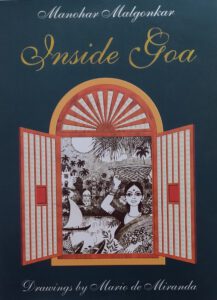
Now practically at the end of his career, doing illustrations for a book in Portuguese – Momentos do meu Passado (2002), by Fernando de Noronha – ‘brought back nostalgic memories of my youth spent in Goa,’ Mário said.[70] Victor Rangel-Ribeiro for his part recalls that when he proposed to the publishers that Mário be the illustrator for Loving Ayesha (2003), ‘first they said he would never agree; and when he agreed, they said he would be late with the drawings. He surprised us all by delivering the drawings on schedule.’[71]
Interestingly, Goa-based projects marked the beginning of Mário’s homeward journey. In 1979, the movie buff of yesteryear acted as a creative assistant for Sea Wolves, a war film shot in Goa. In 1985, Shyam Benegal’s film Trikaal based itself on snippets of the Miranda family history; it was shot in their heritage home and village, the film director deeply appreciative of India’s Latin character available only on its west coast.[72] The mansion, refurbished for the occasion, soon began to figure in coffee table books and glossy magazines.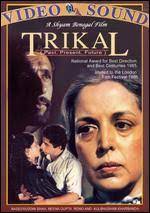
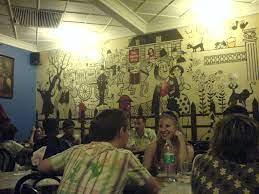
Mário is possibly India’s only cartoonist whose sketches have been turned into murals. His first one came up in 1986, at Hotel Mayfair, in a quaint corner of Panjim. The next two locales were at Colaba: Café Mondegar, his favourite haunt, and Hotel Paradise.[73] Mário also honoured Goa’s Krishnadas Shama Library[74], Panjim’s municipal market complex,[75] and other locations in the country with his murals. The adaptation of Mário’s characters by Air India and by the Charles Correa-designed Kala Academy in Goa was yet another feather in his cap.[76]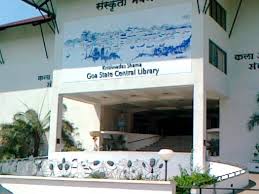
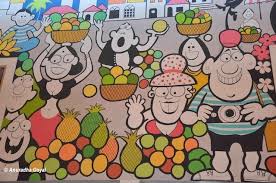
In 1996, the Mirandas gave up their rented place at 7A, Oyster Apartments, Navy Colony, Colaba, and returned with their dogs, turtles, parrot and all to the same sleepy little village of Loutulim that was frozen in time almost just as Mário had left it half a century earlier. The homecoming far from ended his love story with Bombay, though; he continued infusing The Afternoon and The Economic Times with his brand of humour. And in the evening of his life the inveterate cartoonist was a welcome presence in Goa’s social and cultural circles as well.
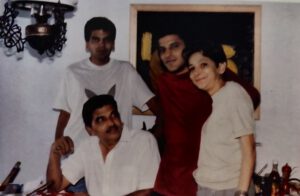
The Goan Cause
Life had come full circle for Mário. ‘What I enjoy most is doing nothing, if I could… – back to the sossegado times!’ he said.[77] Yet he was always brimming with ideas; and even if a wee bit mystified by Goa’s half-hearted response to his work,[78] or so he thought, the quintessential Goan gentleman had many dreams to fulfil and promises to keep.
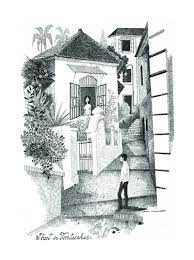
‘Goa has a different atmosphere from the rest of India. After all, Goa was with the Portuguese for 500 years…,’[79] said Mário. He planned to do a series of drawings ‘on my Goa, the Goa that I grew in, the past; the Goa which lots of people did not know existed.’ Considering it critically endangered, he wished to preserve it in his own way.[80] ‘Today, Goa is part of India, so naturally we will lose a lot and gain a lot,’ he said, hoping at the same time that ‘some of the heritage of the past remains and gives Goa this identity that I think it needs.’[81] According to art critic Ranjit Hoskote, Mário’s confluential, Indic and Iberian heritage, ‘gives him an amplitude of cultural references [and] a historically informed sensibility.’[82]
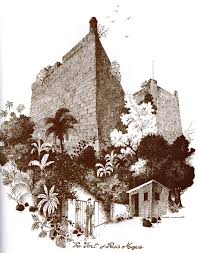
As the convenor of the Goa chapter of INTACH (Indian National Trust for Art and Cultural Heritage), Mário was instrumental in getting the Gulbenkian Foundation to sponsor the establishment of a Museum of Christian Art at the Seminary of Rachol. He also secured funding from Lady Hamlyn Trust, London, for the restoration of the iconic Reis Magos Fort.[83] And even though daunted by politics and red tape, he lent his expertise to public institutions like Goa University, Kala Academy and Goa International Centre.[84] It is ironic that the consummate Goan artist who could make light of just any situation found little reason to smile when it came to the State handling of tourism, environment, animal welfare and heritage issues.[85]
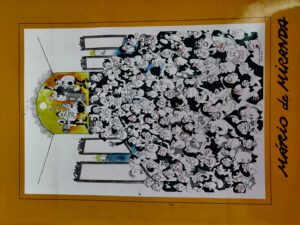
Meanwhile, Mário encouraged fashion designer Wendell Rodricks to document the Goan costume, through the Moda Goa project;[86] and artist Victor Hugo Gomes to study Goa’s ethnography,[87] an experiment that led to the creation of the Goa Chitra Museum. As regards his own oeuvre, Mário was fortunate to see part of it documented in a large-sized book titled Mário de Miranda as well as displayed at Mário Gallery, by architect Gerard da Cunha.
Acknowledgements: (1) I am indebted to Fátima Miranda Figueiredo for her knowledge and patience translated into many hours of whatsapp chats about her brother Mário and the family; and to Raul and Rishaad de Miranda for their warm welcome and lively conversation. (2) Banner picture: Portrait Atelier Goa (3) Article first published in Revista da Casa de Goa, Lisbon, Series II, No. 12, Sep-Oct 2021
[69] The Room on the Roof was first serialised in the Weekly, in 1956; and Anand’s Dul-Dul, The Magic Clay Horse, The Adventures of Pilla the Pup, and Lumbdoom, The Long-Tailed Langoor) were published in the 1960s. Mário also worked on films for children, sometimes for free, Cf. Conversation with Shri Mario Miranda – 2 (Outtakes), op .cit.
[70] Mário’s statement to my father. Cf. Fernando de Noronha, op. cit.
[71] Email of 25.6.2021.
[72] Telephone conversation on 2.7.2021.
[73] https://www.thehindu.com/features/friday-review/art/his-drawings-had-a-special-quality-rk-laxman/article2707166.ece Retrieved on 8 August 2021. Mário chose not to sign the mural, possibly because the artwork was put together by students of J.J. College. Others were done by one Shetty, cf. Conversation with Shri Mario Miranda – 2 (Outtakes), op. cit.
[74] Façade mural and interior panels: project executed by Orlando de Noronha’s firm Azulejos de Goa, Panjim, in 2011.
[75] Executed by Panjim-based Rajesh Salgaonkar, 2005.
[76] Some undertaken by Deepak from Meerut, cf. Conversation with Shri Mario Miranda – 2 (Outtakes), op. cit.
[77] ‘Tale of Two Goans’, op. cit.
[78] FTF Mario Miranda, op. cit.
[79] ‘Tale of Two Goans’, op. cit.
[80] Ibid.
[81] Ibid.
[82] Ranjit Hoskote, ‘The Art of Mario Miranda’, in Mário de Miranda, op. cit., p. 81.
[83] In both projects he had the support of Bal Mundkur; Bartand Singh and Smith Baig of INTACH.
[84] Mário was declared Goa Today’s Man of the Year. Cf. interview with Alexandre M. Barbosa and Alister Miranda, in Goa Today, December 1998, pp. 18-23.
[85] Doordarshan National, Eminent Cartoonists of India, #04, op. cit.; Goa Today, ibid.
[86] https://www.firstpost.com/india/moda-goa-designer-wendell-rodricks-on-indias-first-costume-museum-and-his-vision-for-its-future-5510481.html Retrieved on 19 Aug 2021
[87] https://timesofindia.indiatimes.com/city/goa/dont-call-me-sir-call-me-mario/articleshow/11456423.cms Retrieved on 19 Aug 2021
Story of Mário, the Miranda (Part 2/6)
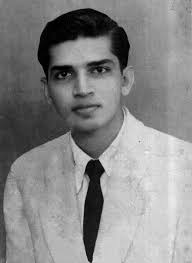 The Artist as a Young Man
The Artist as a Young Man
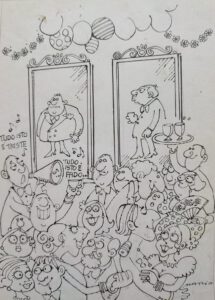
It was during his college days in Bombay that Mário’s characters first strutted out of his diaries; he drew pocket cartoons and peddled them at Flora Fountain for pin money.[11] And at a medical ball held at Clube Vasco da Gama, Panjim, couples dancing the night away delighted in the frisky sketches of the faculty members that Mário kept drawing on the wall mirrors lining the ballroom.[12]
It is not that Mário always passed uncensured. One day, a priest from the village, whom he had depicted outside the local fish market, showed up at his house. Mário’s mother, after doing her best to placate the visitor, ended up going to see archbishop Dom José da Costa Nunes, who had once expressed his wish to meet the young artist. Mário was hesitant but once there, was relieved to see his diaries spark guffaws rather than a controversy. ‘That was the first time I was appreciated by someone I didn’t know,’ he said.[13]
Mário maintained a diary right through his years spent in British India with intermittent stays in Goa and Damão (Figure 2). The last three logbooks (1949-51),[14] now available in print, are a shrine of frolicky pictures of relatives and friends in Loutulim, Panjim and Margão.[15] To quote Nissim Ezekiel, ‘the buffoonery of his human figures is redeemed from grossness by their verve, their inner urge towards going places, getting somewhere. It is not always their fault that there is no place to go, nowhere to get except through the corridors of illusion.’[16]
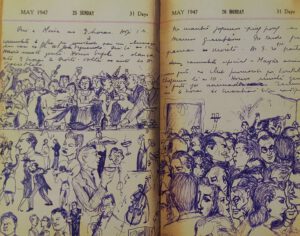
That was Mário’s equivalent of the dark night of the soul! His lifestyle was a cause of concern to his by now widowed mother struggling to manage the household while at the same time providing for Pedro at Princeton University.[17] But then Mário had a change of heart: was it the showcasing of his watercolours and drawings by the 1950 Souvenir of the Bombay-based Loutulenses League[18] that did the trick?
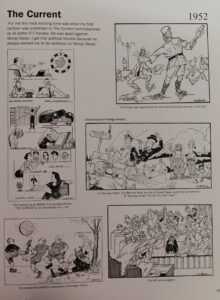
In 1951, seeing a bleak future for himself in Goa, Mário moved to Bombay. Though creative possibilities seemed unlimited here, he was jobless and quite badly off at first. That’s precisely when Policarpo (Polly) Vaz, a fellow hosteller at Rockville,[19] famously suggested to him to hand-craft picture postcards depicting the city monuments, offering to sell them at the hotel where he worked the night shift. Needless to say, the two became fast friends; and they had even thought of migrating to Brazil,[20] when Mário got a call from D. F. Karaka of The Current. The redoubtable editor, riveted by Mário’s diaries, commissioned him to cover a can-can dance scene at the Taj Hotel, and received such a rib-tickler that he promptly took him on as the tabloid’s regular cartoonist.
The young Goan created a stir in Bombay's journalistic circles when his cartoons first appeared in the press. Editor C. R. Mandy and art director Walter Langhammer soon invited him to The Illustrated Weekly of India. Before long, other Times Group publications,[21] too, began to use Mário’s drawings; they skilfully portrayed movement and sound, and often featured the cartoonist’s trademark dog.
Art of Cartooning
That was the year 1952. Mário had virtually stumbled into the profession of cartooning.[22] To an onlooker the job seemed easy, and everything grist to the mill – from the bureaucracy, fashions, business, and people’s habits, to the animal world, environment, music, society, and even politics – but really, finding humour was no mean task. ‘There are times when you don’t feel funny, or may not feel like laughing, but still have to produce a funny cartoon – like a clown who has got to make people laugh all the time, although he doesn’t feel like laughing.’[23]
Elaborating on his predicament, Mário said, ‘People expect me to come up with jokes and anecdotes to make others laugh. I can’t do that. I enjoy humour if it comes from someone else who knows how to tell a good joke…. I am not a naturally funny person; I may look funny, but I am not funny.’[24] And if a cartoonist’s defining quality it is ‘to detect funniness in people’s behaviour or physical features and draw it, it is equally important to be able to laugh with someone, not at someone, without being cruel,’ said Mário, adding: ‘Humour is something very personal, individual. What’s funny to me may not be funny to you. Sometimes I do something which I think is very funny – and it flops! And people asking you to explain a cartoon flattens it completely.’[25]
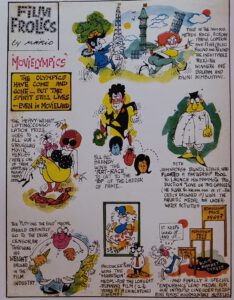
Past the initial scramble for work, Mário began to yearn for the blissful spontaneity of his diary sketching. Add to this the fact that political bigwigs were breathing down his neck, and Mário had a sure recipe for disenchantment. Bombay Presidency’s Home Minister Morarji Desai was among the first ones to let his irritation show – something that taught Mário early on that lampooning political animals involved high risk. When he toned down the humour to appease the readers, cartooning quite paradoxically became a ‘serious business’. ‘Cartoonists are very serious people, and cartoons, no laughing matter,’[26] he quipped.
Finally, Mário stopped pursuing individual politicians; he began to see himself as a social caricaturist more than anything else. He is on record as saying, ‘I am not even a cartoonist; I draw… give me a pen and blank paper and I will draw. I just love to draw.’[27]
Acknowledgements: (1) I am indebted to Fátima Miranda Figueiredo for her knowledge and patience translated into many hours of whatsapp chats about her brother Mário and the family; and to Raul and Rishaad de Miranda for their warm welcome and lively conversation. (2) Banner picture: Portrait Atelier Goa (3) Article first published in Revista da Casa de Goa, Lisbon, Series II, No. 12, Sep-Oct 2021
[11] ‘Tale of Two Goans: Mario Miranda & Wendell Rodricks’, https://www.youtube.com/watch?v=5FDLGApfATc&t=5s
[12] Cf. Fernando de Noronha, Momentos do meu passado (Goa: Third Millennium, 2002), p. 146.
[13] FTF Mario Miranda, op. cit.
[14] Cf. The Life of Mário (1949, 1950, 1951) ed. Gerard da Cunha (Goa: Architecture Autonomous), in 2016, 2012 and 2011, respectively. Fátima Miranda Figueiredo reckons that her brother’s diary sketches total up to about 6,750 over a period of 18 years (1934-1951).
[15] He frequented the houses of his relatives, Judge António Miranda and Captain Adolfo Menezes, in Panjim, and Judge Eurico Santana da Silva, in Margão; and often stayed overnight with friends in their hostels.
[16] Nissim Ezekiel, ‘No escape if Mario is looking at you,’ in Mário de Miranda, ed. Gerard da Cunha (Goa: Architecture Autonomous, 2005), p. 276.
[17] As told by Fátima Miranda Figueiredo, 27.5.2021.
[18] Souvenir of the Silver Jubilee of the Loutulenses League (Goa: Imprensa Nacional do Estado da Índia, 1950). Curiously, in the chapter titled ‘The Rising Generation’, Mário figures as an Arts graduate, not as an Artist.
[19] Polly was from Bastorá; other hostelites, Joe Albuquerque and Paulo Miranda, from Loutulim. Cf. Mário de Miranda, op. cit., p. 14.
[20] Manohar Malgonkar, ‘Biography’, in Mário de Miranda, op. cit., p. 15.
[21] Femina; Filmfare; The Evening News and The Economic Times.
[22] Conversation with Shri Mario Miranda – 2 (Outtakes), op. cit.
[23] FTF Mario Miranda, op. cit.
[24] Ibid.
[25] Ibid.
[26] Ibid.
[27] Manohar Malgonkar, ‘Biography’, in Mário de Miranda, op. cit., p. 24; Conversation with Shri Mario Miranda – 2 (Outtakes), op. cit.
